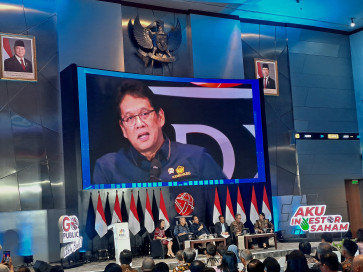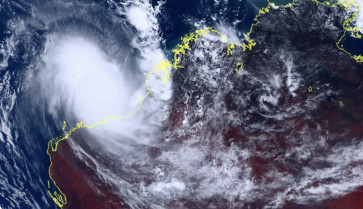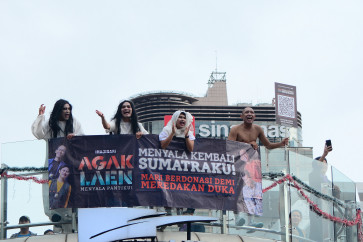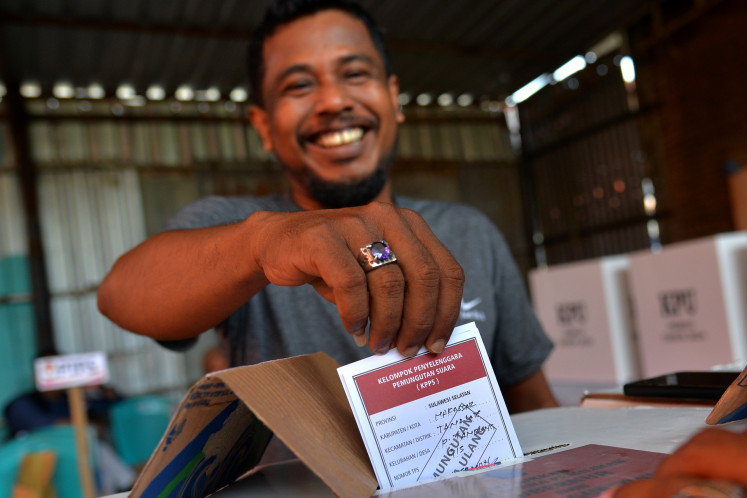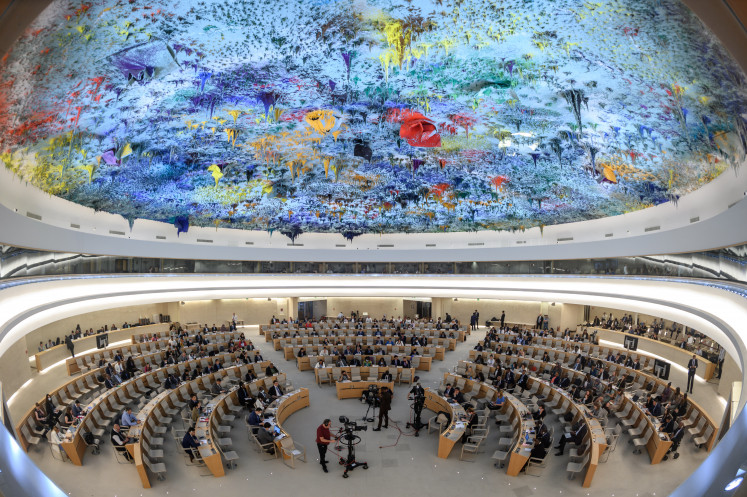Popular Reads
Top Results
Can't find what you're looking for?
View all search resultsPopular Reads
Top Results
Can't find what you're looking for?
View all search resultsWhen pop culture meets literary fiction
Meet Dyan Nuranindya, the 22-year-old writer who started Dealova fever when she wrote about a beautiful young girl who likes to play basketball and has to choose between loves
Change text size
Gift Premium Articles
to Anyone
Meet Dyan Nuranindya, the 22-year-old writer who started Dealova fever when she wrote about a beautiful young girl who likes to play basketball and has to choose between loves.
Sounds like typical teen-themed writing, you might say, but Dyan's first published work turned out to be a tremendous success.
"The first draft was written when I was in junior high, but none of my friends wanted to read it. I finally found someone who said she would take a look, but days later I found the draft lying on a cafeteria table, smeared with ketchup and soup," Dyan said with a big laugh.
Teenlit books are reflections of the worlds of young people today. (JP/J. Adiguna)
After rewriting the draft and sending it off to a publisher, Dealova landed on bookstore shelves in 2004. The book was adapted into a motion picture in 2005 and has been reprinted 14 times, setting a new trend in Indonesia's publishing industry: teenlit.
"Teen literature is very easy to sell," Hetih, an editor at Gramedia Pustaka Utama, said. "We print 7,000 copies per title, distribute them, and 3,000 copies ought to sell in a few months.
A teenlit work may have a very simple storyline, but if teenagers like it, they won't stop talking about it. When the demand continues to rise, the book can be reprinted any number of times."
The profit element has undoubtedly attracted more and more writers into the pop publishing business -- teenlit, chicklit, metropop etc.
So what is it like for young adults who channel their idealism and energy into writing literary fiction?
"On one hand, it saddens me that these commercial novels get a larger appreciation than works of literature do," Ratih Kumala, 27, the author of two novels and one short story anthology, said.
"On the other hand, I am also happy that so many young writers today are not afraid to express their ideas."
Ratih, who describes herself as a full-time writer, does not deny the possibility of writing a commercial work one day.
"It is more about proving that I can write in that genre. But if that book is going to get me a lot of money anyway, I'd have to say, 'Hey, why not!'"
Like Ratih, Calvin Michel Sidjaja, 22, also thinks there's nothing wrong with writing pop fiction. "If I were to write popular fiction, however, I would make sure it wasn't full of clich*s. Some Indonesian pop novels are blander than others," he said via online chat. Calvin's novel, Juktaposisi, won third place in the Jakarta Arts Council's Novel Competition 2006, and was published last year.
Ratih, Calvin, and other young literary fiction writers agree that it takes special skills to write a good pop novel. Dina Oktaviani, a 22-year-old poet-slash-writer, said that any story had the potential to be an inspirational piece of work, even a pop story, but not all writers had the ability to explore that potential.
"Literary writers think that writing pop fiction means selling out, because many pop novelists here do just that, producing trashy books," she added.
One young writer is not reluctant, however, to incorporate pop references into her serious novel.
"My book is about teen life, I'm a teenager, and most of the people who read my book are teenagers, so what I wrote must be a teenlit," Farida Susanty, 17, said.
"But unlike most teenlit works, I chose to reveal the dark side of teenage life. I want people to understand that teenagers have that side too, and to be able to care rather than blaming them for everything they do wrong." For her unusual depiction of teenage life in Dan Hujan Pun Berhenti (And the Rain Too Stops), Farida was awarded the 2007 Khatulistiwa Literary Award for the Talented Young Writer category.
For Farida, the most important thing is whether readers feel close to a work, "to delve into it, know what it is trying to say and absorb it. You may read some high literature and have no idea what it says -- it's pointless. You can also come across novels that are so commercial it serves no purpose but to be just that".
Let us recap. Demand is the first thing that underlines the differences between pop and literary works of fiction.
As Indonesian readers favor pop lit, some publishers seize the opportunity, taking on more pop writers.
The second factor is talent. Our young literary fiction writers seem confident that they are able to write pop novels, while most of the young pop novelists put emphasis on the word "high" in high literature, saying it would take them a long time to get up there.
Well, if they can turn The Taming of the Shrew into Ten Things I Hate About You, or Emma into Clueless, maybe one day Dyan can rewrite Dealova, making it into a work of literary fiction, and setting yet another new trend.


